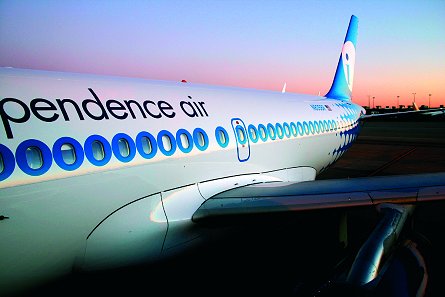Analysts believe the future of Independence Air is more likely to be liquidation, rather than buyout or asset purchase, as the regional jet operator files for Chapter 11.
Independence Air’s long-awaited bankruptcy may have demonstrated that independence was the last thing that the troubled regional jet operator needed, but the likely liquidation of the low-fares carrier, formerly Atlantic Coast Airlines, stands to benefit the industry.

Months after most observers gave up on its strategy of low fares on frequent 50-seater flights, Independence parent FlyI had lost nearly a half a billion dollars since June 2004, when it ended its Atlantic Coast feeder operation for United Airlines and began Independence. As losses continued, Independence, based at Washington’s Dulles International, tried to recast itself, dumping many of the Bombardier regional jets and adding a dozen Airbus A319s, but could not withstand the response of former partner United and others on the hotly contested East Coast. These competitors had equally low fares on bigger aircraft.
FlyI chief restructuring officer Steve Westberg wrote in a court filing that rivals reacted to its start-up “by matching fares, reducing [ticket] restrictions, offering additional frequent-flyer incentives, increasing advertising”. United alone increased capacity on competing routes by 37%, Westberg wrote.
Many questioned its strategy of using regional jets, noting the type does not lend itself to low-fare economics. With relatively high costs spread over just 50 seats, there is little margin for empty seats, high fuel costs, or strategic error. Independence thought differences in its hi-tech check-in and Southwest-style in-flight service could give it an edge.
When it went into Chapter 11 in early November, Independence was still true to its informal approach, telling the public in advertisements and on its website: “Just this once, we’re going to be like other airlines” and declare bankruptcy. It added: “Basically, the sun will come up tomorrow. It will be ‘business as usual’ at Independence Air.”
But with just $24 million in unrestricted cash, that will not be easy. It has parked 28 of its remaining 58 regional jets, and although it is flying all 12 of its A319s, few see Independence surviving. Claiming it was “maintaining a dialogue” with 30 interested parties, FlyI set an early January deadline for it to sell the carrier as a whole or, if it cannot find an investor, auction its assets.
Most feel its operating certificate is more valuable than its fleet. A sale to a start-up or even foreign-backed investors, such as the long-delayed Virgin America project, may be the best possible outcome. But, many, including Lehman Brothers analyst Gary Chase, think liquidation is likely. Chase believes “the carrier will shrink significantly or cease operations over the next 60 days”.
Calyon Securities analyst Ray Neidl doubts that stronger low-fares airlines such as JetBlue Airways would rescue Independence. Chase says: “As Independence shrinks further, US Airways and AirTran will be the largest beneficiaries.” Within days of the FlyI filing, AirTran said it would strengthen Dulles schedules with four daily roundtrips to Boston Logan from February.
Some investors and analyst Neidl see hope for FlyI if it returns to operations as a codeshare feeder, but former partner United has replaced it and is suing it, and such a development is considered unlikely. FlyI acknowledged in a court filing that “it recognises that, in this challenging industry environment, an investor or buyer may not step forward”. Standard and Poor’s analyst Betsy Snyder says that after years of speculation about airline liquidation, one might finally occur.
DAVID FIELD/WASHINGTON
Source: Airline Business
















